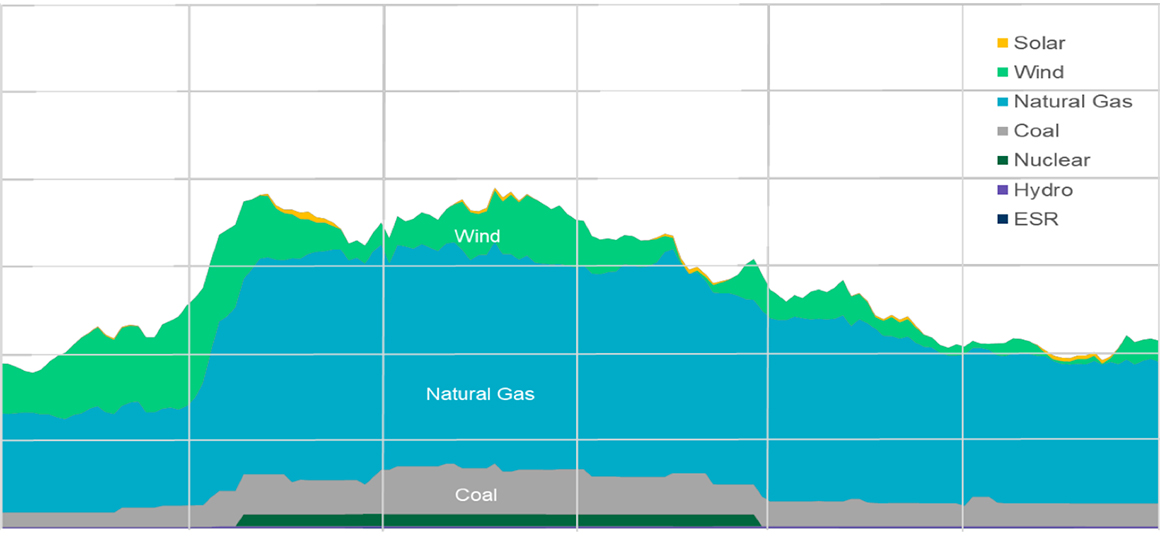What happened during Winter Storm Uri and what is the state doing to fix - or not - the grid?
Texas will forever remember the events of Winter Storm Uri, a polar vortex event that devastated the state’s main electric grid in February of 2021, roughly between February 13th and February 17th. In fact, over 170 million U.S. residents were placed under various weather alerts during this time, but Texas was impacted most severely, with more than 4.5 million homes and businesses left without power in Texas, some for several days. The storm and its impact has been blamed for at least 210 direct or indirect deaths, with some estimates much higher, with nearly 1,000 killed as a result of the crisis. Meanwhile, the impacts of the storm in Texas are estimated to have cost between $195 and $295 billion in damages, making it the costliest winter storm on record.
And it could have been much much worse. According to the Electric Reliability Council of Texas, the Texas power grid was about four minutes from complete failure when partial grid shutdowns were implemented.
During the crisis, some energy firms made billions in profits, while others went bankrupt; Some firms were able to pass extremely high wholesale prices ($9,000/MWh, typically $50/MWh) on to consumers, while others could not, price was held at the $9,000 cap by PUCTX for allegedly two days longer than necessary; some $16 billion in extra costs which ultimately consumers will pay, and much more in gas costs.
What caused the crisis? One might point to three main causes. An inadequate supply, a surge in demand, and perhaps most directly, a changing climate that leads to more sudden extremes. More specifically, beginning with a deep freeze and blustery conditions, the combination of a sudden spike in demand accompanied with a huge loss of supply led to rotating outages, planned and unplanned. Over a four to five day period, millions of Texans were left without power. Lacking electricity, water systems failed, some industrial plants had sudden bouts of emission events, and the price of gas and electricity spiked, leaving billions in unpaid bills. While the causes of the electrical grid failure are complex, the fact is that power plants of every type failed, led largely by the failure of gas plants to function properly, either because equipment froze, or because the gas supply could not physically get to the power plants. An illustrative graph of those failures can be seen here which illustrates how power plants of every type were either down before the storm hit, or quickly failed as a result of the climatic conditions.
Winter Storm Uri: Net Generator Outages and Derates by Fuel Type (MW)

A failure to anticipate the changing climate which leads to more extreme cold snap and heat waves, and a failure to learn from previous similar events are obvious. In fact, Texas had similar electric grid scares and failures in other years such as 1984, 1989 and 2011 during similar polar vortexes, though none as severe as the 2021 events. And the state failed to require robust action after previous actions. During the storm, the state seemed unable to even communicate to Texans what to do, and transmission companies lacked the ability to spread outages in a rotating fashion, despite modern “smart” meters, instead leaving millions in the dark and cold. This was made worse by the obvious fact that much of the demand came from homes, apartments and small businesses that had inefficient heating, leaky windows and inadequate insulation, both spiking the demand but also leaving their residents in severe conditions. In response, the commissioners of the Public Utility Commission of Texas resigned, as did the Board of Directors of ERCOT, and after months of debate, the Texas Legislature passed a series of bills designed to make improvements to the grid, including required weatherization of power plants, transmission and to some degree the gas supply, and a new governing structure at the PUC and ERCOT.
While many of those bills are still being implemented, the Legislature came back again in 2023 and passed additional reforms aimed at “fixing the grid.” Some of these made good sense, like adding extra reliability services known as ancillary services, while others - like potentially loaning out money or providing grants to new gas and other “dispatchable” resources - were seen as outside the market actions that benefited certain interests. The legislature also put some guardrails around the costs of providing extra payments to certain generators as many fossil fuel companies have been advocating through a new service called the PCM, or “Performance Credit Mechanism.” Still many believe as one example, the Legislature and political leaders failed to consider obvious solutions like putting more incentives into reducing demand through energy efficiency and demand response, and considering integrating our ERCOT grid with other multi-state grids. In 2023, we are continuing to press the PUC to address energy efficiency and demand response through rulemaking and other actions, and to more directly help customers, while also calling on state agencies, cities and utilities to apply for and spend millions of dollars of federal resources as a result of the recent passage of new federal infrastructure and clean energy investment programs.
Take Action: Tell the PUC to fix the grid.


